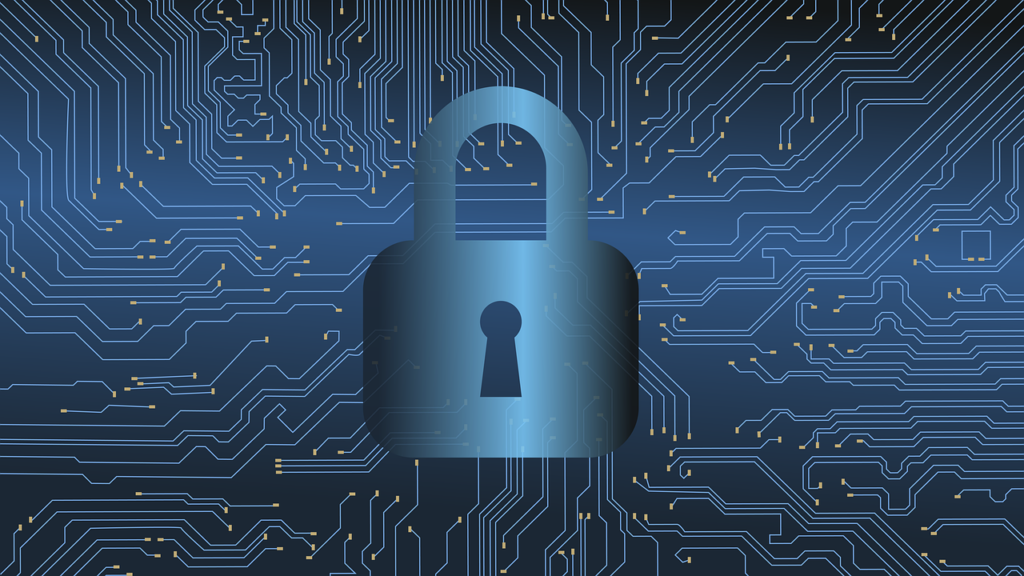The Importance of Cybersecurity in Today’s Digital Landscape
In the 21st century, the proliferation of technology and the internet has transformed the way organizations operate. While these advancements have opened new avenues for growth and innovation, they have also given rise to unprecedented security challenges. Cybersecurity has emerged as a critical component of organizational strategy, essential for safeguarding sensitive data, maintaining trust, and ensuring compliance with regulatory frameworks. This article delves into the importance of cybersecurity, its benefits, challenges, and future directions, providing a comprehensive overview of this vital field.

Understanding Cybersecurity
Definition of Cybersecurity
Cybersecurity refers to the practices, technologies, and processes designed to protect systems, networks, and data from unauthorized access, theft, damage, or disruption. It encompasses various components, including:
- Network Security: Protecting the integrity and usability of networks and data.
- Application Security: Ensuring that software and applications are secure from threats.
- Information Security: Protecting data from unauthorized access and ensuring its integrity.
- Operational Security: Protecting processes and assets in an organization.
- Disaster Recovery: Planning for the recovery of operations after a security incident.

The Evolving Cyber Threat Landscape
The digital landscape is continually evolving, leading to an increase in cyber threats. Cybercriminals are using sophisticated techniques to exploit vulnerabilities, making it crucial for organizations to stay ahead of potential attacks. The common types of cyber threats include:
- Malware: Malicious software designed to harm, exploit, or otherwise compromise systems, including viruses, ransomware, and spyware.
- Phishing: Deceptive attempts to obtain sensitive information by masquerading as a trustworthy entity in electronic communications.
- DDoS Attacks: Distributed Denial of Service attacks aim to overwhelm a network, rendering it inaccessible to legitimate users.
- Insider Threats: Risks posed by individuals within the organization, including employees or contractors, who may misuse their access to sensitive information.

The Importance of Cybersecurity
Protecting Sensitive Data
Organizations today handle vast amounts of sensitive data, including personal information, financial records, and proprietary business information. The loss or theft of this data can lead to significant financial and reputational damage. Cybersecurity measures are essential to protect this data from unauthorized access and breaches.
Data Protection Techniques
| Technique | Description |
|---|---|
| Encryption | Encrypting data ensures that even if it is intercepted, it remains unreadable without the correct decryption key. |
| Access Controls | Implementing strict access controls limits who can view or modify sensitive information, reducing the risk of insider threats. |
| Regular Audits | Conducting regular security audits helps organizations identify vulnerabilities and address them proactively. |
Ensuring Business Continuity
Cyber incidents can disrupt business operations, leading to financial losses and damage to reputation. Cybersecurity is essential for ensuring business continuity and minimizing disruptions caused by cyber incidents.
Business Continuity Strategies
| Strategy | Description |
|---|---|
| Incident Response Planning | Developing and regularly updating incident response plans ensures that organizations are prepared to respond quickly and effectively to security incidents. |
| Data Backup | Regularly backing up data protects against data loss in the event of a breach or system failure. |
| Redundancy | Implementing redundancy in critical systems ensures that operations can continue even if one component fails. |

Regulatory Compliance
Organizations must comply with various data protection regulations to avoid legal repercussions and financial penalties. Robust cybersecurity measures play a crucial role in achieving compliance.
Key Regulations
- GDPR (General Data Protection Regulation): This regulation mandates strict data protection practices for organizations operating in the European Union. Non-compliance can result in hefty fines, making it imperative for organizations to implement necessary security measures.
- HIPAA (Health Insurance Portability and Accountability Act): For healthcare organizations, compliance with HIPAA is essential to protect patient information and avoid significant penalties.
- PCI DSS (Payment Card Industry Data Security Standard): Organizations handling credit card transactions must adhere to PCI DSS requirements to protect customer payment information.

Building Customer Trust
In an era where data breaches are prevalent, customers are increasingly concerned about the security of their personal information. Organizations that prioritize cybersecurity demonstrate a commitment to protecting customer data, which can enhance trust and loyalty.
Strategies for Building Customer Trust
- Transparency: Organizations that communicate their cybersecurity measures and practices to customers foster a sense of trust. Regularly updating customers on security improvements and potential threats can enhance their confidence in the organization.
- Compliance: Adhering to data protection regulations signals to customers that an organization takes their privacy seriously. Compliance with regulations like GDPR and CCPA can enhance an organization’s reputation and attract customers who prioritize data privacy.
- Incident Response: Having a robust incident response plan in place demonstrates preparedness and accountability. In the event of a breach, prompt communication and transparent actions can help rebuild customer trust.
Benefits of Cybersecurity
Investing in cybersecurity offers numerous benefits beyond protecting against cyber threats. These benefits encompass various aspects of organizational performance, reputation, and customer trust.

Protection Against Data Breaches
One of the primary benefits of cybersecurity is the protection it offers against data breaches. Cybersecurity measures such as encryption, access controls, and regular security audits significantly reduce the likelihood of unauthorized access to sensitive information.
Consequences of Data Breaches
Data breaches can have devastating consequences, including financial losses, legal liabilities, and reputational damage. According to a report by IBM, the average cost of a data breach in 2021 was $4.24 million. By implementing effective cybersecurity protocols, organizations can safeguard their data and mitigate the impact of potential breaches.
Enhanced Customer Trust
In an age where data breaches are prevalent, customers are increasingly concerned about the security of their personal information. Organizations that prioritize cybersecurity demonstrate a commitment to protecting customer data, which can enhance trust and loyalty.
Regulatory Compliance
With the increasing number of data protection regulations, organizations must ensure compliance to avoid legal repercussions and financial penalties. Robust cybersecurity measures play a crucial role in achieving compliance.
Key Regulatory Considerations
- GDPR Compliance: The GDPR mandates strict data protection practices for organizations operating in the European Union. Non-compliance can result in hefty fines, making it imperative for organizations to implement necessary security measures.
- Industry Regulations: Many industries have specific regulations governing data security, such as the Health Insurance Portability and Accountability Act (HIPAA) for healthcare organizations. Ensuring compliance with these regulations is essential for legal and operational integrity.
- Documentation and Reporting: Compliance often requires thorough documentation of security practices, data handling procedures, and incident response plans. Organizations must maintain records to demonstrate their commitment to security and compliance.

Increased Operational Efficiency
Robust cybersecurity practices contribute to increased operational efficiency by minimizing disruptions caused by cyber incidents. By proactively identifying and mitigating risks, organizations can enhance productivity and reduce downtime.
Operational Efficiency Benefits
- Reduced Downtime: Effective cybersecurity measures minimize the likelihood of cyber incidents that disrupt operations. This ensures continuity and prevents financial losses associated with downtime. Organizations can enhance operational resilience through regular security assessments and incident response planning.
- Streamlined Processes: Organizations that prioritize cybersecurity often implement standardized processes for data handling and security. This streamlining can lead to improved efficiency across departments. By integrating security practices into daily operations, organizations can reduce the risk of human error and enhance overall performance.
- Enhanced Collaboration: A secure environment fosters collaboration among employees, enabling them to share information and work together effectively without the fear of data breaches. This collaboration can drive innovation and productivity. Organizations should encourage cross-departmental communication while maintaining robust security practices.
Challenges in Cybersecurity
While the importance of cybersecurity is widely recognized, organizations face several challenges in implementing effective security measures. Understanding these challenges is crucial for developing robust cybersecurity strategies.
Resource Constraints
Many organizations, especially small and medium-sized enterprises (SMEs), struggle with limited resources for cybersecurity initiatives. Budget constraints may hinder the ability to invest in advanced security technologies and personnel.
Key Resource Challenges
- Budget Limitations: Organizations may prioritize other areas of their business over cybersecurity, leading to inadequate investments in security measures. This increases vulnerability to cyber threats. Allocating budget for cybersecurity is essential, as the cost of a breach can far exceed preventive investments.
- Talent Shortage: The cybersecurity talent pool is limited, making it challenging for organizations to find skilled professionals. This shortage can result in overworked staff and insufficient security coverage. Organizations should invest in training and development programs to upskill existing employees and explore partnerships with educational institutions.
- Technology Gaps: Organizations may lack access to the latest security technologies, leaving them vulnerable to emerging threats. Investing in cybersecurity tools is essential for staying ahead of cybercriminals. Organizations should evaluate their existing technology stack and seek opportunities to enhance their security capabilities.
Rapidly Evolving Threat Landscape
Cyber threats are constantly evolving, with cybercriminals developing increasingly sophisticated techniques to exploit vulnerabilities. Organizations must stay vigilant and adapt their security measures accordingly.
Strategies for Addressing Evolving Threats
- Continuous Monitoring: Implementing continuous monitoring of systems and networks allows organizations to detect suspicious activity in real time. This proactive approach helps identify potential threats before they escalate.
- Threat Intelligence Sharing: Collaborating with industry peers and sharing threat intelligence can enhance an organization’s understanding of emerging threats. Participating in information-sharing initiatives can provide valuable insights into the latest cyber threats and best practices for mitigation.
- Regular Security Training: Providing ongoing security training for employees helps raise awareness of potential threats and equips them with the knowledge to recognize and report suspicious activity. Organizations should conduct regular training sessions and simulate phishing attacks to reinforce security awareness.
Human Error
Despite technological advancements, human error remains one of the leading causes of cybersecurity incidents. Employees may inadvertently expose organizations to risks through careless actions or lack of awareness.
Addressing Human Error
- **Security Awareness Training
**: Organizations should implement comprehensive security awareness training programs to educate employees about cybersecurity best practices and potential threats. Regular training sessions can help employees understand the importance of data protection and the consequences of negligence.
- Implementing Strong Policies: Establishing clear security policies and procedures helps guide employees in their daily activities. Organizations should ensure that employees are aware of security protocols and encourage adherence to best practices.
- Encouraging Reporting: Creating a culture of openness where employees feel comfortable reporting suspicious activity can help organizations identify and address potential threats promptly. Organizations should establish clear channels for reporting security incidents and recognize employees for their vigilance.
Future Directions in Cybersecurity
As technology continues to evolve, so will the field of cybersecurity. Organizations must be prepared to adapt their strategies to address emerging challenges and threats.
Embracing Artificial Intelligence (AI) and Machine Learning (ML)
The integration of AI and ML into cybersecurity practices holds immense potential for enhancing threat detection and response capabilities. AI-powered tools can analyze vast amounts of data in real time, identifying patterns and anomalies that may indicate a cyber threat.
Benefits of AI and ML in Cybersecurity
- Proactive Threat Detection: AI and ML can help organizations detect potential threats before they escalate, reducing the risk of data breaches. By analyzing historical data and user behavior, these technologies can identify anomalies that warrant investigation.
- Automated Incident Response: AI-driven systems can automate incident response processes, enabling organizations to respond to threats more swiftly and effectively. This reduces the workload on security teams and allows for faster remediation of security incidents.
- Continuous Learning: Machine learning algorithms can learn from past incidents and adapt to new threats, enhancing the effectiveness of security measures over time. This adaptive learning can improve the accuracy of threat detection and response capabilities.
Zero Trust Architecture
The traditional perimeter-based security model is becoming less effective in today’s decentralized digital landscape. The Zero Trust security model operates on the principle of “never trust, always verify,” requiring strict identity verification for every individual and device attempting to access resources.
Key Principles of Zero Trust
- Least Privilege Access: Granting users the minimum level of access necessary for their roles reduces the risk of unauthorized access to sensitive information. Organizations should implement role-based access controls (RBAC) to enforce least privilege principles.
- Continuous Verification: Zero Trust emphasizes continuous verification of user identities and device security, ensuring that only authorized individuals can access sensitive resources. Organizations should implement multi-factor authentication (MFA) and device health checks to verify access requests.
- Microsegmentation: Dividing networks into smaller segments limits lateral movement within the network, reducing the impact of potential breaches. Organizations should implement microsegmentation to isolate critical systems and data from potential threats.
Cybersecurity Workforce Development
As the demand for cybersecurity professionals continues to grow, organizations must invest in workforce development to bridge the skills gap in the industry. Initiatives aimed at training and upskilling employees can enhance an organization’s cybersecurity posture.
Strategies for Workforce Development
- Training and Certification Programs: Organizations should support employees in pursuing relevant training and certification programs to enhance their skills and knowledge. Investing in employee development not only benefits the organization but also boosts employee morale and retention.
- Collaboration with Educational Institutions: Partnering with universities and educational institutions can create pathways for students to enter the cybersecurity field. Organizations can offer internships, mentorship programs, and scholarships to support aspiring cybersecurity professionals.
- Diversity and Inclusion: Promoting diversity in the cybersecurity workforce can lead to a broader range of perspectives and ideas. Organizations should actively seek to recruit individuals from diverse backgrounds to enhance creativity and innovation in addressing cybersecurity challenges.
Conclusion
In an increasingly digital world, the importance of cybersecurity cannot be overstated. Organizations must prioritize robust cybersecurity measures to protect sensitive data, ensure business continuity, comply with regulations, and build customer trust. While challenges such as resource constraints, evolving threats, and human error persist, organizations can leverage advancements in technology, workforce development, and innovative security models to enhance their cybersecurity posture. By staying proactive and adaptable, organizations can navigate the complexities of the cyber threat landscape and safeguard their assets for the future.